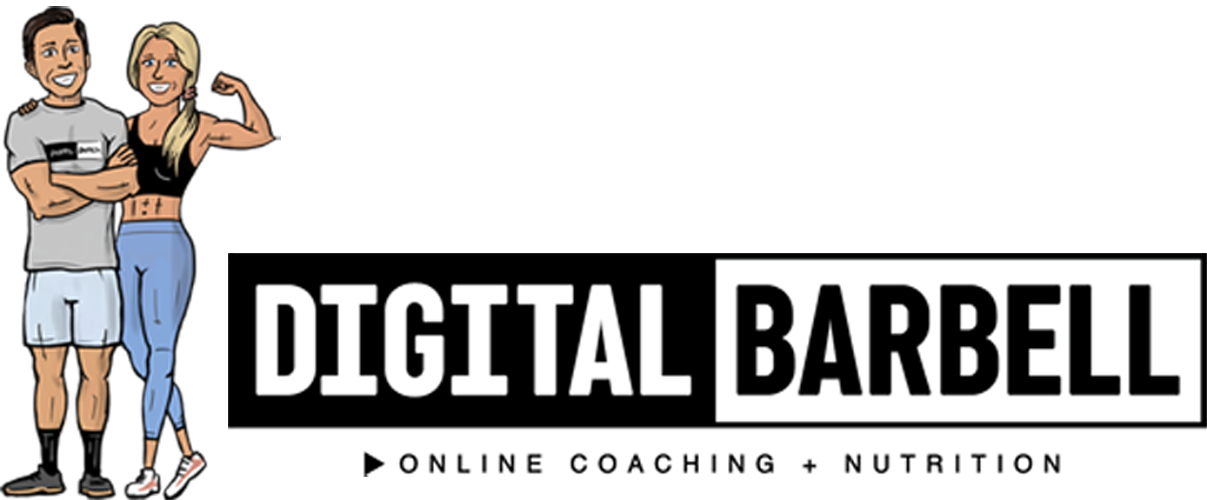How Do Gorillas Get So Jacked Eating Plants?
5 Fascinating Fitness Facts That Will Change the Way You Train & Eat
Looking for fitness tips backed by science, but still surprising enough to make your jaw drop?
In this article, we’re breaking down five facts about muscle growth, plant-based protein, body composition, and more. If you want to understand why your workouts might not be working as well as they could or what you can do to improve your results, these facts will help.
By the way… We’re Jonathan & Blakley, the owners of Digital Barbell. Our roots are in in-person training, but now we are helping people get in the best shape of their lives 100% online.
Since our business is online, we live, work, and travel in our Airstream with our two crazy dogs.
You can follow along on our YouTube channel, and be sure to subscribe to our podcast on Apple or Spotify for tons of free and valuable fitness content.
Hey! We’re Jonathan & Blakley
Hiking in Arizona
1. How Are Gorillas So Muscular Without Lifting Weights?
You’ve seen the pictures. Massive chests. Boulder shoulders. And all on a diet of fruit and leaves?
Here’s how gorillas get so jacked without ever touching a dumbbell:
Fast-Twitch Muscle Fibers: Gorillas have a higher ratio of Type II (fast-twitch) muscle fibers, which are built for explosive power and hypertrophy. Not great news for us humans trying to get jacked!
Myostatin Deficiency: Gorillas naturally produce less myostatin, a protein that limits muscle growth. Less myostatin = more gains, even with less direct training.
Caloric Surplus & High Protein Diet: Adult gorillas consume up to 8,000 calories per day, with about 25% of their diet coming from protein (from leaves, stems, and other plants).
Microbiome Advantage: Their gut bacteria are optimized to break down plants and extract amino acids far better than the average human gut. Again, no fair!
Functional Movement: Though they seem sedentary, gorillas move constantly. Foraging, climbing, swinging from trees, and hauling their own body weight around uneven terrain. It’s their version of bodyweight training.
💡 Want to build muscle on a plant-based diet? Here’s how to get enough protein without meat
2. You Can Get Complete Protein from Plants (If You Combine the Right Ones)
A common misconception is that vegetarians and vegans can't get enough complete protein without meat. But, it’s simply not true!
You can form a complete protein (meaning it includes all 9 essential amino acids) by combining certain plant foods throughout the day.
Here are some high-protein plant-based combos that work:
Grain or Nut+Legumes = Complete Protein
Rice +Bean = Complete Protein
Peanut Butter+Whole Wheat Bread = Complete Protein
Pita Bread+Hummus (chickpeas)= Complete Protein
Tortilla+Black Beans = Complete Protein
Oats+Soy Milk = Complete Protein
Corn+Lentils = Complete Protein
You don’t have to combine these in the same meal, just within the same day.
📌 Pro tip: Many plant-based proteins are low in leucine, the amino acid that triggers muscle protein synthesis. That’s why vegetarians should aim for slightly higher total daily protein intake to maximize results.
3. Strength Training is a Powerful Natural Antidepressant
If you needed another reason to lift weights, here it is: Strength training is proven to reduce symptoms of depression.
What the research says:
A 2018 meta-analysis published in JAMA Psychiatry reviewed 33 randomized controlled trials with over 1,800 participants. The results?
Strength training had a moderate to large antidepressant effect—even when participants didn’t significantly improve their strength.
Why does lifting help your mental health?
✅ Boosts serotonin and dopamine
✅ Reduces chronic inflammation
✅ Improves self-confidence and self-efficacy
✅ Enhances sleep quality
✅ Creates a sense of structure and progress
And it works across all age groups, fitness levels, and genders.
💡 Curious how to start strength training? Click the button below for a free 5-week program.
4. Muscle Weighs More Than Fat (Volume for Volume)
The old saying is true: muscle is denser than fat.
Here’s what that actually looks like:
1 gallon of muscle = ~8.8 pounds
1 gallon of fat = ~7.4 pounds
That’s about a 20% difference in density.
So if your weight stays the same but your clothes fit better and your body looks leaner, you may be losing fat and gaining muscle at the same time. That’s called body recomposition, and it’s one of the best outcomes of strength training paired with smart nutrition.
📌 Don’t obsess over the scale. Pay attention to strength, progress photos, and how your clothes fit.
Body Weight vs. Body Composition
Focus On What Matters!
5. Your Calves Aren’t Growing? It’s (Partly) Genetic
Ever feel like no matter how much you train your calves, they just don’t respond? You're not crazy.
Here's why:
Your calf muscles are about 80% slow-twitch (Type I) fibers, which are better at endurance, not growth.
These fibers are less responsive to hypertrophy training, so infrequent calf training isn’t going to cut it.
Here’s what to do to make your calves grow:
Train them 3–4 times per week
Use deep range of motion, especially in the stretched position
Vary your rep ranges and time under tension
Progressively overload just like you would with squats or presses
Consider training calves first in your workout when you’re fresh
It’s totally possible, it just takes a strategic approach.
Whether you're fascinated by gorilla strength, frustrated by stubborn calves, or trying to eat more protein without meat, understanding the science behind fitness helps you make smarter decisions.
You don’t need perfect genetics. You don’t need to train like a maniac. But you do need to understand how your body works and follow a plan that respects it.
That’s what we do at Digital Barbell. We help real people get strong, lean, and confident with sustainable strength training and nutrition coaching.
Want to know how we can help you achieve your fitness goals?
Thanks for reading! Until next time, Lift Heavy, Be Nice,
-J&B


